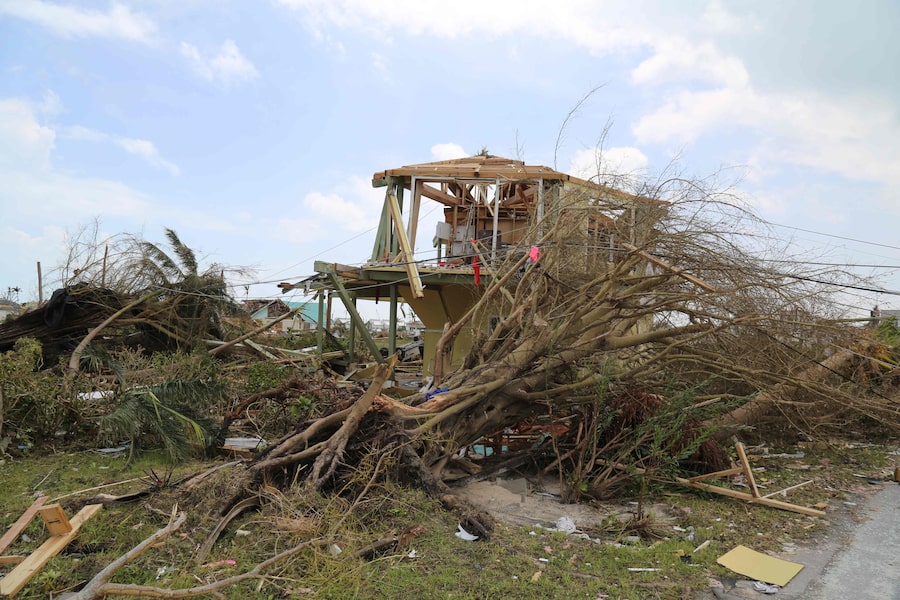Officials in Atlantic Canada are warning everyone not to be complacent ahead of the expected weekend arrival of hurricane Dorian.
The Category 2 hurricane has knocked out power to more than 200-thousand homes and businesses in North Carolina and is heading north.
Environment Canada meteorologist Linda Libby says it’s not clear if the massive storm will transition from tropical to post-tropical by the time it hit parts of Atlantic Canada and Quebec on Saturday.
She warns that it is better to be prepared and underwhelmed than to be under-prepared and unable to deal with what actually occurs.
The Canadian Hurricane Centre says the most likely track would bring Dorian south of the Maritimes on Saturday, pushing through eastern Nova Scotia late in the day.
The forecast calls for severe winds and rainfall to have major impacts for southeastern New Brunswick, P-E-I, Nova Scotia, western Newfoundland and Quebec’s Lower North Shore.
The highest amounts of rain are likely for Nova Scotia and the Gulf of St. Lawrence region, with the possibility of as much as 100 millimetres to the north and west of Dorian.
Officials say everyone in these areas should have enough food, water, medication and supplies for at least 72 hours.
The chief of emergency management at the Halifax Regional Municipality, Erica Fleck, urged people to start preparing for a potential hurricane, beginning with gathering up loose items in their yards and stowing them in sheds and other sheltered areas.
“Of course the track of the hurricane has been very unpredictable like most storms … But what we’re concerned about is the similarities to hurricane Juan when it hit Halifax some years ago,” she said.
Fleck said that when Juan hit Halifax in late September 2003 it brought sustained winds of 150 kilometres per hour, with gusts up to about 170 kilometres per hour.
“Hurricane Dorian is a little less than that, but we’re still concerned by the very high winds expected,” she told reporters at a briefing at the city’s emergency command centre.
Meanwhile, Nova Scotia Power said it was mobilizing close to 1,000 personnel and deploying resources in advance of the storm and would set up its emergency operations centre at noon Friday.
“Our preparations include bringing in several hundred power line technicians from Nova Scotia, New Brunswick, Ontario and Quebec,” said the utility’s president and CEO Karen Hutt, in a news release.
“As well, we will have forestry crews, planners, damage assessors, engineers, supervisors, communication experts, and customer care representatives at the ready.”
ExxonMobil said it was planning to remove 160 personnel from the Thebaud natural gas field and from aboard the Noble Regina Allen drilling ship, working on Nova Scotia’s Sable Offshore project. It said the ship would be placed in storm mode.
Environment Canada said the region would experience some tropical storm force winds, with wind speeds that could reach hurricane force to the south of the forecast track and the possibility of hurricane force northwesterly winds behind the storm.
A Category 1 hurricane produces sustained wind speeds above 119 kilometres per hour. Tropical storm force winds exceed 63 kilometres per hour.
Libby said as the storm system transitions to post-tropical it generally expands and picks up speed. That usually means the strongest winds would occur to the right of the system and the heaviest rain to the left of the track.
She said Dorian’s winds would likely diminish over North Carolina’s outer banks before heading north towards Canada but cautioned the storm would still pack a punch.
“It is expected to maintain hurricane strength as it makes landfall in Nova Scotia and even as it approaches Newfoundland,” she said.
Forecasters warned of potential tree damage in particular, which could lead to power outages.
“Trees are still full of leaves here … so that means that essentially they are big sails and will catch the wind much more than they would in winter,” said Libby. “The potential for tree damage cannot be diminished in this case.”
She pointed out that trees aren’t as firmly rooted as they are when the ground is frozen in winter, and that the ground had already been softened up by the heavy rains that accompanied post-tropical storm Erin only last week.
Rainfall this time around is also expected to be significant, with the highest amounts likely for Nova Scotia and the Gulf of St. Lawrence region, with the possibility of as much as 100 millimetres to the north and west of Dorian.
Our Morning Update and Evening Update newsletters are written by Globe editors, giving you a concise summary of the day’s most important headlines. Sign up today.





